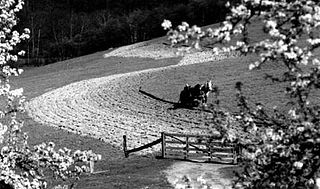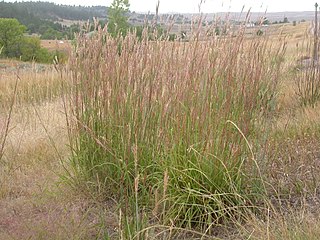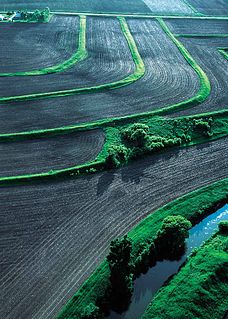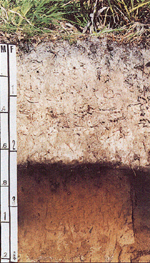
Bama is the official state soil of Alabama.
The Professional Soil Classifiers Association of Alabama adopted a resolution at its 1996 annual meeting recommending the Bama Soil Series as the state soil. The association is of a group of soil classifiers representing the Alabama Cooperative Extension System, the Alabama Agricultural Experiment Station, the USDA-Natural Resources Conservation Service, the Alabama A&M University, private soil consultants, the Board of Registration for Professional Soil Classifiers, and the Alabama Department of Public Health. The Alabama Soil and Water Conservation Committee and the Alabama Association of Conservation Districts also joined in recommending the Bama Soil Series as the official State Soil. [1] The Bama series was designated the official state soil by the Alabama Legislature on April 22, 1997. [2]

Soil classification deals with the systematic categorization of soils based on distinguishing characteristics as well as criteria that dictate choices in use.
The Alabama Cooperative Extension System provides educational outreach to the citizens of Alabama on behalf of the state's two land grant universities: Alabama A&M University and Auburn University.
Natural Resources Conservation Service (NRCS), formerly known as the Soil Conservation Service (SCS), is an agency of the United States Department of Agriculture (USDA) that provides technical assistance to farmers and other private landowners and managers.
Bama soils are mainly in level to gently sloping areas on high stream terraces paralleling major river systems and on broad marine terraces. These very deep, well-drained, moderately permeable soils formed in thick deposits of loamy fluvial or marine sediments. These soils make up more than 360,000 acres (1,500 km2), mainly in the western and central parts of Alabama. They occur in 26 counties. These soils are well suited to cultivated crops, pasture, hay, woodland, and most urban land uses. Cotton and corn are the main cultivated crops.

Pasture is land used for grazing. Pasture lands in the narrow sense are enclosed tracts of farmland, grazed by domesticated livestock, such as horses, cattle, sheep, or swine. The vegetation of tended pasture, forage, consists mainly of grasses, with an interspersion of legumes and other forbs. Pasture is typically grazed throughout the summer, in contrast to meadow which is ungrazed or used for grazing only after being mown to make hay for animal fodder. Pasture in a wider sense additionally includes rangelands, other unenclosed pastoral systems, and land types used by wild animals for grazing or browsing.

Hay is grass, legumes, or other herbaceous plants that have been cut and dried to be stored for use as animal fodder, particularly for large grazing animals raised as livestock, such as cattle, horses, goats, and sheep. However, it is also fed to smaller domesticated animals such as rabbits and guinea pigs. Even pigs may be fed hay, but they do not digest it as efficiently as herbivores.
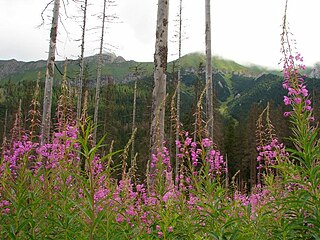
A woodland or wood is a low-density forest forming open habitats with plenty of sunlight and limited shade. Woodlands may support an understory of shrubs and herbaceous plants including grasses. Woodland may form a transition to shrubland under drier conditions or during early stages of primary or secondary succession. Higher density areas of trees with a largely closed canopy that provides extensive and nearly continuous shade are referred to as forests.
Bama soils are classified in USDA soil taxonomy as fine-loamy, siliceous, subactive, thermic Typic Paleudults. [3]
USDA soil taxonomy (ST) developed by United States Department of Agriculture and the National Cooperative Soil Survey provides an elaborate classification of soil types according to several parameters and in several levels: Order, Suborder, Great Group, Subgroup, Family, and Series. The classification was originally developed by Guy Donald Smith, former director of the U.S. Department of Agriculture's soil survey investigations.
